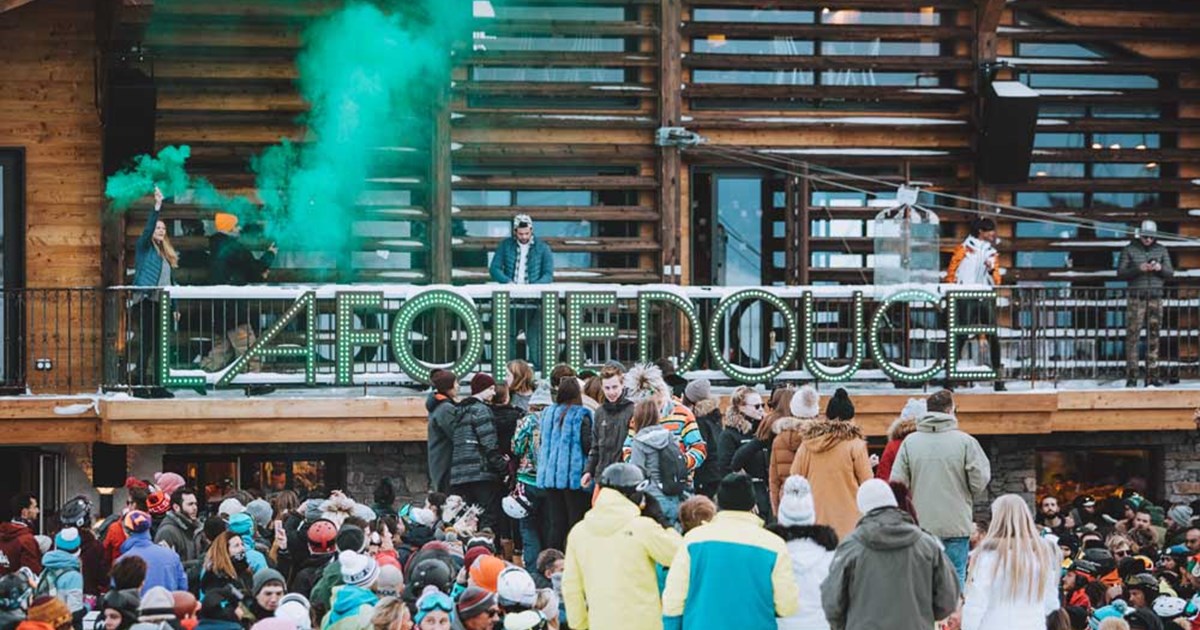
We're a big fan of skiing the tour of the PDS- likewise Yodel magazine in Morzine who put together this details description of the tour..take it away Yodel..
The Portes du Soleil is one of the largest ski areas in the world with over 650km of marked pistes encompassing twelve resorts. It stretches between Mont Blanc and Lake Geneva, which creates a microclimate that is excellent for snowfall.
Jean Vuarnet was responsible for developing Avoriaz and then linking it to the surrounding resorts creating the Portes du Soleil ski area. The highest point in the area is 2466m and the lowest is at 1000m and there are more than 200 lifts linking the area, which stretches over 14 valleys. Luckily, for skiers and snowboarders who are keen to explore, most of the Portes du Soleil ski area can be reached in a single circuit. The circuit will take most average skiers and snowboarders a whole day to complete so first lifts are advised!
There are two directions the circuit can be skied; clockwise or counterclockwise. Completing the circuit counterclockwise could mean challenging La Chavanette otherwise known as The Swiss Wall or facing the getting the chairlift down. The Swiss Wall is classified as an orange, as it is considered too dangerous to even be a black. The wall should only be attempted if you are a very accomplished skier and are confident you can complete it safely. For this reason, we are taking a look at completing the circuit clockwise – a little bit more achievable for everyone!

There are many different ways of completing the Portes du Soleil circuit but here’s just one of our suggestions…
From Les Gets head up the Chavannes lift and follow signs to Morzine. Ski down the Pleney slope to the bottom where a bus stop is located. Take the petit train across town to the Super Morzine lift, take this up and then the Zore lift and follow the cat track to the Proclou lift, which will take you up to the top of the Lindaret bowl. From here ski down into the bowl - you can even stop to have a play in the famous Burton Stash park on the way down. 
From Lindaret, take the Chaux Fleurie lift up and ski down to the bottom of the Plaine Dranse. Take the Chaux-des-Rosées chair up and ski down to Les Combes. Take this lift up and follow the long run down into Linga. From here you can again get the bus across the town of Châtel, to the Super Châtel lift.
If you are doing well for time, you could get the bus across to the Petit Châtel lift and take this followed by the Barbossine. From here ski down and take the Tronchay lift up. From here you can enjoy some great views across Lake Geneva towards Montreux before heading back towards the Super Châtel lift.
From the top of the Super Châtel, take the Chemillon and ski down to the bottom of the Le Corbeau. From here, you can take the bus across the town of Morgins to the Folleuse or it is actually also possible to walk there and take in the beautiful church.
Take the lift up and then ski to the Bochasses following signs for Champoussin. Ski to the bottom of the Aiguilles des Champeys and take the lift up then ski down to the bottom of the Pointe de L’Au, take this lift and then you can ski down into Les Crosets.
From Les Crosets, take the new Grande Conche lift and ski down to the bottom of the Cuboré, take this up and over lift into the Fornet area. Then ski back down into Avoriaz, take the Stade lift and ski down the Prodains home run.
Again take the A bus back into Morzine and take the Pleney bubble up, from here follow signs all the way into Les Gets. Then enjoy a drink before collapsing after a long days skiing - phew!
 As we slide towards the spring, local Morzine magazine Yodel have released the emerging details about the various end of season film competitions here in Morzine.
As we slide towards the spring, local Morzine magazine Yodel have released the emerging details about the various end of season film competitions here in Morzine.